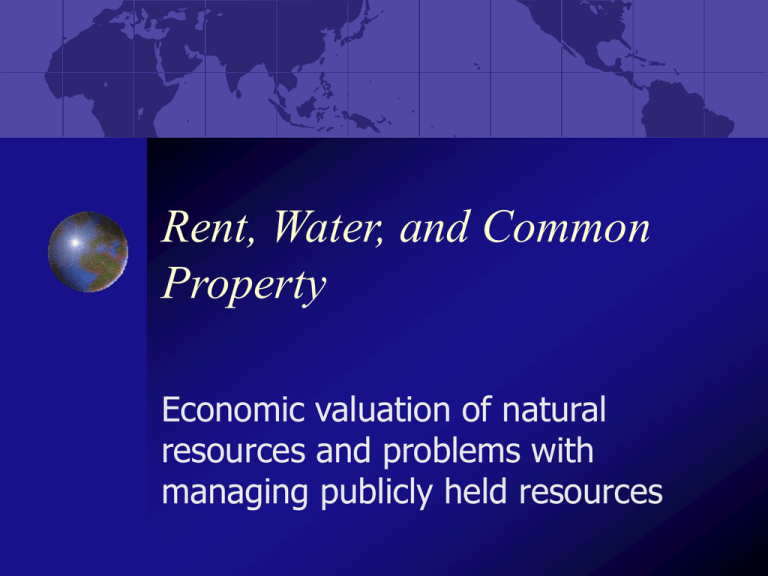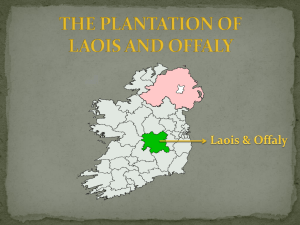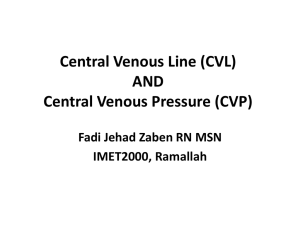Rent
advertisement

Rent, Water, and Common Property Economic valuation of natural resources and problems with managing publicly held resources Grape prices High grape prices in 2000 caused conversion of oak woodland to grape production, and subsequent decline in price. Who gains or loses from a increase or decrease in grape prices? Develop the concept of “Rent” Applicable to land, water, … all scarce resources! Concepts of “rent” [1 of 2] Contract rent: payment by tenant for right to use owner’s property Apartment Economic rent: payment to a fixed factor above competitive rate of return (payment for a good in excess of its cost of provision) Fertile agricultural land Concepts of “rent” [2 of 2] Scarcity rent: premium accruing to a factor of production because it is limited in supply Willie Nelson Quasi-rent: Short-run profit that are competed away over time. New Nat’l Forest policy increases logging An economic model of rent 3 types of land (A, B, C) 1000 acres of each type With $1000 in inputs can produce A: 500 bushels [cost = $2.00/bushel] B: 400 bushels [cost = $2.50/bushel] C: 250 bushels [cost = $4.00/bushel] Current price $2.00/bushel Who gains from 2x price increase? RentB=600 $/bushel RentA=1000 RentC=0 Farm A: gains $1000 Farm B: gains $600 Farm C: break even Oaks: lose 4.00 2.50 2.00 500 900 1150 Bushels A “living wage” What are the environmental and ecological effects of a living wage for agricultural workers in SB county? Depends on How much workers produce on different types of agricultural land Think of workers (labor) as an input to production (just like land, fertilizer, etc.) Very large labor supply With an effectively infinite supply of labor at current wage, w: Output/L MPA MPB MPC wage LA L* Labor (L) Rent to each land type Rents accrue to land type A because labor is more productive on land type A. RentA Output/L RentB RentC wage L* Labor (L) With minimum wage Output/L MPA MPB MPC New wage Old wage L2 L* With minimum wage: 1. Employment 2. Rent 3. Type “C” out of Production (env.). Labor (L) The economics of water Allocation: balance between many users and limited resource: Consumptive uses (residential, industrial, agricultural) Non-consumptive uses (fisheries, recreational, hydro-electric power, transportation) Consumptive users in US Irrigation: 39% Thermo-electric power: 39% Public supply: 12% Industry: 6% Livestock: 1% Home: 1% Mining: 1% Commercial: 1% Top 3 agricultural users State Acres (‘000) California 9,480 % flood % spray % drip 74% 19% 7% Nebraska 7,450 47% 53% 0% Texas 56% 43% 1% 6,310 Agricultural vs. municipal Agricultural water heavily subsidized Price ~ $20/AF, use 80% water in California Cost to supply ~ $1000/AF Municipal water Price ~ $300/AF Groundwater Largely unregulated, “open access” resource, few property rights, difficult to enforce pumping laws The Central Valley Project The CVP carries water from Northern CA to southern CA. Water rights for CVP water follow the land, not the owner. Which landowners gain from CVP? Who gains from CVP? Landowners that purchased property prior to CVP gain. Prior purchase price of land did not “capitalize” the CVP water right. Future price will capitalize that right. Rent accrues to property that will obtain rights to CVP water. Imperial Valley/San Diego High profile water transfer proposed from Imperial Valley to San Diego Imperial Valley Desert, agricultural, poorest county in CA Vast water rights San Diego One of richest, largely municipal, high marginal value for water. The economics of water transfer What does economics have to say about water transfer from agricultural uses to municipal uses? Allocate a fixed amount of water between the 2 uses. How do we know when allocation is efficient? Equi-marginal principle Efficient allocation $ (U) San Diego willing to pay this for 1st AF $1000 $ (A) Imp. Valley willing to sell 1st AF for this DA $50 DU U0 U: 0% A: 100% A0 100% 0% Limit water to control growth? Some argue that we should limit transfers (prev. slide) to limit growth in urban environments. Economic solution: If we want to limit growth, should target growth directly (e.g. development tax or TDRs). That way, get same outcome more efficiently. Did they reach agreement? Different marginal values should lead to large incentives for trade Imperial Valley was going to sell about 5% of water allocation to San Diego at price of around $300/AF. Deal broke down Concerns over agricultural labor & way of life California & the Colorado R. 7 states draw from Colorado: Arizona, Colorado, California, New Mexico, Utah, Wyoming, and Nevada Dept. of Interior: CA has not lived up to sharing & conservation obligations Saw Imperial Valley transfer as good thing If no deal, slash CA entitlement from 5.2 MAF/yr to 4.4 MAF/yr. Jan 1, entitlement reduced. Allocation by prior appropriation Prior Appropriations: “First in time, first in use” Economists criticize open access systems because they lack specified property rights. “Prior appropriations” gives property rights to agricultural users. Is this an efficient way to allocate water between 2 consumptive users? “Prior appropriations” Price Urban Supply (S-QA) Ag users get first dibs, consume QA units of water at price PA. Urban buys QU at price PU. PAPU so equimarginal principle fails. Supply PU P* PA DU QU DA QA Q* DTotal Water










